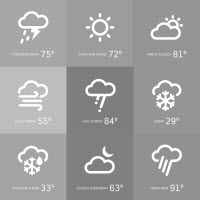PLACER/NEVADA/SIERRA COUNTIES – Caltrans is reminding motorists of various lane and ramp closures in multiple locations along Interstate 80 (I-80) as several projects and emergency repairs continue in Placer, Nevada and Sierra counties.
Motorists may experience delays up to a maximum of two hours and are encouraged to factor in additional travel times along the I-80 Sierra corridor. Here is the breakdown for next week:
Eastbound I-80
- Monte Vista Pavement Rehabilitation Project between Monte Vista and Drum Forebay, various lane closures will be in place around the clock beginning 6 a.m. Monday, July 29 through 10 a.m. Thursday, August 1.
- Yuba Pass Separation Overhead Bridge Project between Yuba Gap and the junction with State Route 20 (SR-20), lane closures will be in place from 8 p.m. to 6 a.m. the following day Monday, July 29 through Wednesday, July 31. Work is scheduled to end at 6 a.m. Thursday, August 1.
- Soda Springs Pavement Rehabilitation Project between Troy and Soda Springs, lane closures will be in place from 6 a.m. to 9 p.m. Monday, July 29 through Thursday, August 1.
- Emergency Repairs Location 5 between Floriston and Hinton Road, lane closures will be in place around the clock beginning 7 p.m. Sunday, July 28 through 10 a.m. Friday, August 2.
- Emergency Repairs Location 4
- Between Central Truckee and Donner Park, lane and ramp closures will be in place around the clock beginning 7 p.m. Sunday, July 28 through 10 a.m. Friday, August 2.
- Between Donner Summit Rest Area and Soda Springs, lane and ramp closures will be in place around the clock beginning 7 p.m. Sunday, July 28 through 6 p.m. Monday, July 29.
- Yuba Pass Separation Overhead Bridge Project between the junction with SR-20 and Yuba Gap, lane closures will be in place nightly from 4 p.m. to 7 a.m. the following day Monday, July 29 through Thursday, August 1. Work is scheduled to end at 7 a.m. Friday, August 2.
- Emergency Repairs Location 2 between Nyack and Whitmore, lane closures will be in place around the clock beginning 6 a.m. Monday, July 29 through noon Friday, August 2.
- Monte Vista Pavement Rehabilitation Project between Drum Forebay and Monte Vista, lane closures will be in place nightly from 6 p.m. to 9 a.m. the following day Monday, July 29 through Thursday, August 1. Work is scheduled to end at 9 a.m. Friday, August 2.
Caltrans District 3 is responsible for maintaining and operating 4,385 lane miles in 11 Sacramento Valley and Northern Sierra counties. Caltrans reminds motorists to “Be Work Zone Alert” and slow in construction zones for the safety of travelers and crews performing these improvements.
The department will issue construction updates on X @CaltransDist3 and on Facebook at CaltransDistrict3. For real-time traffic, click on Caltrans’ QuickMap or download the QuickMap app from the App Store or Google Play.
| CleanCA.com | CleanWaterCA.com | #BeWorkZoneAlert | X | Facebook | YouTube |








